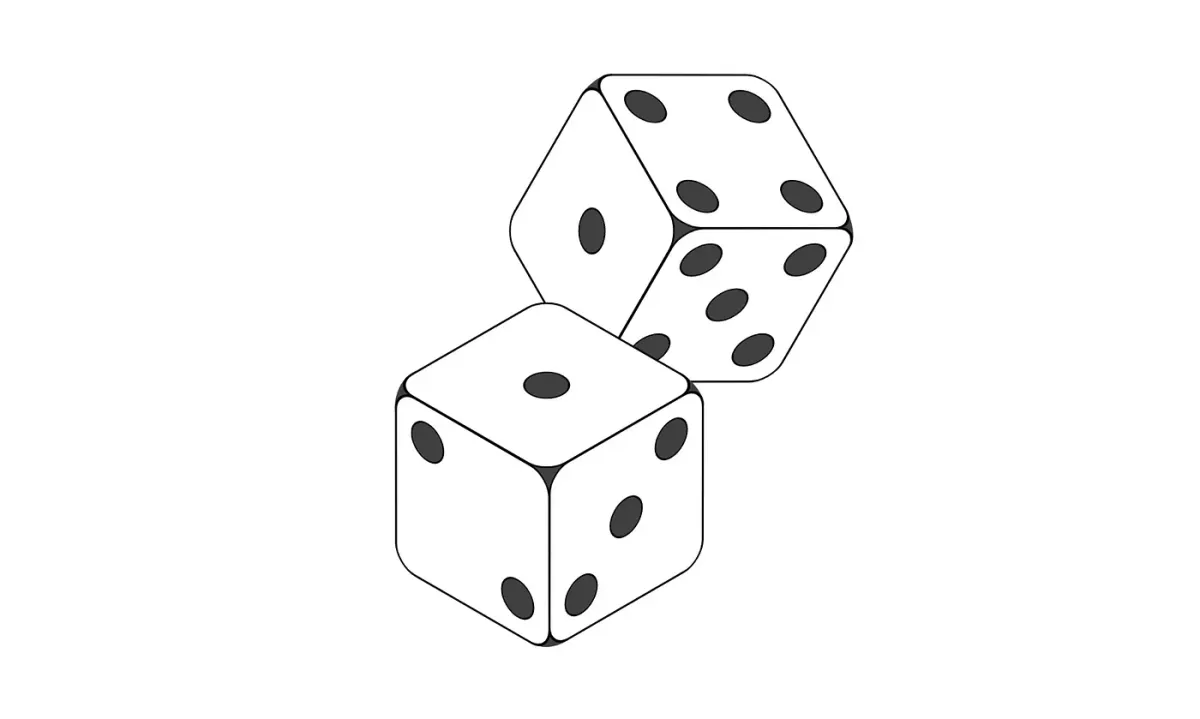What is Probability For?
To start with an analogy, what is money? Textbooks and Wikipedia say that money is a medium of exchange, and a store of value, and a unit…

To start with an analogy, what is money? Textbooks and Wikipedia say that money is a medium of exchange, and a store of value, and a unit of account. But that is really the answer to a different question: “what is money for”? Asking “what is money?”, especially today when only a very small proportion of money resides in physical coins and notes rather than digital entries, is too abstruse a question for my taste.
By analogy, the question “what is probability?” is traditionally interpreted as asking for the meaning of statements such as “the probability that the home team wins tomorrow’s football game is 60%”. An excellent concise treatment of that question — discussing subjectivism and frequency and propensity — can be found in this Interpretations of Probability article. Partisans in that centuries-long debate sometimes seem to regard these as like alternative theologies of which only one could be true. But let us instead switch to asking what probability is for. Surely we have no difficulty appreciating that the same thing can have different uses, as does money. And we have an empirical question: when humans use words like probability or chance or likely, what kind of things are they talking about? Why do we care about probabilities?
Curiously, I have never found any wide-ranging discussion of that question. My own ongoing Probability in the Real World project seeks to articulate the breadth of contexts in which we perceive chance. So here is my suggestion for a (top level) classification of “what probability is for” into four categories, bearing in mind that in practice they often overlap.
Purpose 1: Decisions
Many real-world decisions are decisions under uncertainty: we don’t know what the future consequences of decision A or decision B will be. Hearing “80% chance of rain tomorrow” might prompt a decision to carry a raincoat or cancel a picnic. What percentage of my retirement funds should I decide to place in the stock market? As a California homeowner I received an annual reminder that regular insurance does not cover earthquakes, and inviting me to buy specific earthquake insurance for $1,800; should I decide to pay it? Presented with two possible treatments for prostate cancer, do you choose the one with greater chance of success but also greater chance of annoying irreversible side effects?
In all these cases we inevitably employ some explicit or implicit sense of what is likely to happen.
Purpose 2: Explanations
There are several well known historical science-oriented insights, that observed properties can be explained by randomness. For instance there is Maxwell’s statistical mechanics, using randomness to explain the thermodynamic behavior of large systems, and Einstein’s treatment of Brownian motion as arising from random molecular bombardment. A less well known, but to my mind more significant, insight concerns population genetics. If one viewed heredity as like paint mixing — offspring characteristics are a mixture of parent characteristics — then the effect of any chance beneficial mutation would be diluted by 1/2 in each successive generation, and so effectively disappear. In Darwin’s era, before genetics were understood, this was a serious objection to the theory of evolution by natural selection. The later realization that genes are discrete entities, and a basic (Wright–Fisher) mathematical model, explains how a random beneficial mutation does in fact have a chance to become “fixed” in the entire population after many generations, regardless of how large the population. So natural selection is indeed mathematically possible.
An everyday life context is summarized by the insight “coincidences are more likely than intuition suggests”. That is, as in the famous Birthday Paradox, superficially striking coincidences can sometimes be explained as just what will happen by pure chance. Though to be honest, for most real-world coincidences such as those recorded in the Cambridge Coincidences Collection, one cannot actually do a calculation to check the “just by chance” assertion.
Purpose 3: Exploiting randomness
Chance usually refers to what is outside our control, but there are some contexts where we deliberately introduce randomness. Most familiar, of course, are what I rather prissily call explicit games of chance based on artifacts with physical symmetry, exemplified by dice, roulette, lotteries, playing cards, etc.
However, there is a (perhaps surprising) range of other “exploiting” contexts.
Randomized controlled trials are used to determine effectiveness of medical procedures — a timely topic during the current pandemic. Opinion polls
ideally use random sampling. Randomness can be used for fairness — selecting jurors at random. Then there are more specialized contexts (such as strategies in game theory, and randomized algorithms) in which a non-random problem is tackled via introducing randomness.
Purpose 4: Narrative
The discussion above takes a rather academic viewpoint, mostly focussed on contexts where one might seek numerical probabilities. But how do people think about chance, unprompted, in everyday life? To study this I have used several sources of data, in particular an old file of 100,000 search queries for “chance of” or “probability of” made to the search engine Bing, and references to chance in blogs. You can see representative items here. The topics are hard to categorize. A considerable proportion are either casual speculation about future events (but not tied to any specific required decision), or commentary about personal past events (e.g. as “lucky” or “unlikely”). So let me call this
“narrative about one’s own life and experiences” in which one perceives chance.
Readers may recall that, in The Black Swan, Taleb emphasizes what he calls the Narrative Fallacy, which “causes us to see past events as more predictable, more expected, and less random than they actually were”. That may well be true in general, but here we are choosing cases where we do perceive chance.
Narrative also enters science at a conceptual level. In thinking seriously about the Fermi paradox, a central question is: given the physical characteristics of an Earth-like planet at its formation, what is the probability that a technological civilization will arise eventually? If that probability is very very small, that is small compared to 1/(number of Earth-like planets), then the paradox goes away — we are alone, and lucky to be here. If the probability is not comparatively small, then the paradox remains — why do we not see evidence of extraterrestrial civilizations?
Concluding Comments
Authors of textbooks on mathematical probability focus on logical development of the mathematics, but usually with a rather haphazard and narrow selection of contexts where this mathematics is useful. Popular science articles and the many non-technical books on aspects of probability
do cover a range of topics, but (to my taste) do not succeed in conveying the full breadth of contexts, which of course is impossible in a short article like this one.
What about Statistics? Nate Silver’s brilliant The Signal and the Noise constitutes an elegy for 20th century statistics, which was based on probability models. That is, on assuming data arises from some real effect masked by randomness, and trying to extract the real effect. This is an “explanation” methodology. In contrast machine learning (= AI), the ebullient 21st century successor to statistics, is about “prediction”, exemplified by what we now see every day in Google’s search results and Amazon’s suggested purchases. These are just the output of algorithms
predicting what we might like, based on past data from similar customers.
Probability plays only a technical role within that field. The memorable phrase “to explain or to predict?” marks the distinction.
Finally, the entire Finance complex — equity markets, bonds and bank loans, insurance — is ultimately about risk, that is about risk being transferred from entities that want less risk to entities willing to take more risk. All this involves some quantitative assessment of probabilities of relevant gains and losses, and I place it in the “decision” category.





